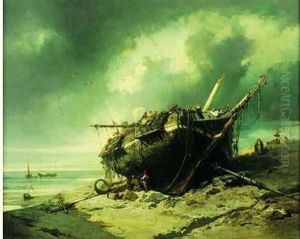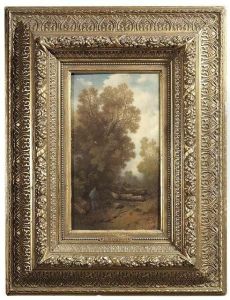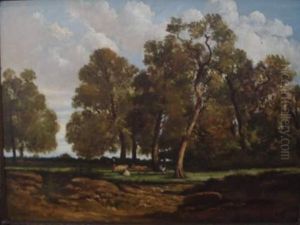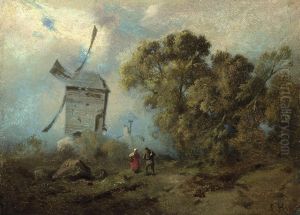Louis Hoguet Paintings
Louis Hoguet was a 19th-century German landscape painter, primarily known for his picturesque Italian landscapes and architecture paintings. Born in Potsdam, Germany, in 1833, Hoguet descended from a family of artists, which likely influenced his choice of career and helped him develop his skills in the arts from a young age. His father, Carl Wilhelm Hoguet, was a painter as well, and his grandfather, Daniel Hoguet, had been a copper engraver.
Louis Hoguet's work often reflected the Romantic period's fascination with the exotic and the historical, which was common among many artists of his time. He was particularly skilled at capturing the essence of Italian scenery, from the ruins of ancient Rome to the bustling life of its modern streets. His landscapes were characterized by a fine attention to detail, a harmonious palette, and the skillful use of light and shadow, which gave his paintings a particular atmosphere and depth.
Hoguet studied at the Academy of Arts in Berlin and was influenced by the work of the German painter Carl Blechen, who was known for his own landscape paintings. Hoguet's travels in Italy had a profound impact on his art, as they allowed him to study the Italian masters and to paint from the rich landscapes and historical sites he visited. His picturesque views of Italy were well-received, and he became known for these works throughout his career.
Louis Hoguet continued to paint and exhibit his works until his death in 1895. While he may not be as widely recognized as some of his contemporaries, his paintings remain a testament to the Romantic era's enduring interest in the beauty of the natural world and the allure of Italy's historical legacy. Hoguet's works are collected and admired by those with an appreciation for 19th-century European landscape painting, and they can be found in various art collections and museums.



